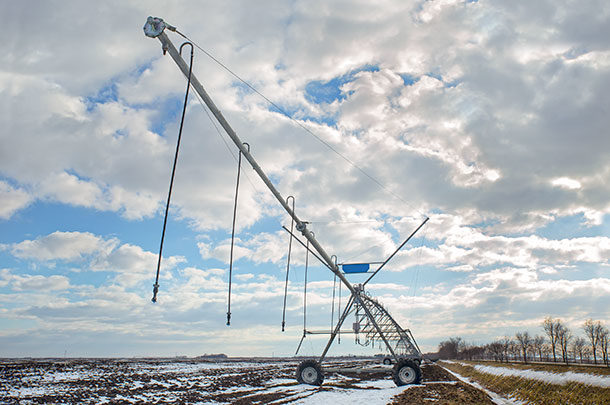-
Flushing the system
- If you have water quality issues or if your well is pumping some sand
- Clean out the sand trap
- Drain water from all pipe above ground
-
Panel boxes
- Check for loose or damaged connections
- Seal up openings to avoid rodent damage
-
Structure
- Check sprinkler chart for proper sprinkler placement
- Check for worn or broken components, sprinklers and regulators
- Replace every 7,000 to 10,000 hours
- Check boots, gaskets and mid-drains for leaks
-
Drive train
- Drain water from gearboxes and top off with the proper lubricant
- Check knuckles for wear, and make sure shields are in place
- Check tire pressure
-
Pivot tracks
- Fill tracks in the fall so they can firm up over the winter
- Fill tracks in the fall so they can firm up over the winter
-
Park pivot
- Position system parallel to prevailing winds
- Park on a level surface, not in an old track, so the system can expand and contract with the freezing temperatures
-
Lock out and secure system
- We don’t want the system to be turned on during the off-season without the grower’s knowledge. Ice buildup could take the system down.
- We don’t want the system to be turned on during the off-season without the grower’s knowledge. Ice buildup could take the system down.
-
Clean up vegetation
- Around pivot point and well
- Make the space less inviting to rodents
-
Chemigation pumps
- Drain and clean pump and hoses
- Drain and clean pump and hoses
-
Protect from cattle
- If grazing cattle on stalks, protect the system and pumping plant from cattle
It is a good idea to make notes of problems that you encountered during the growing season while they are fresh in your mind! ![]()
Troy Ingram is an extension educator with the University of Nebraska – Lincoln.
—From University of Nebraska – Lincoln
PHOTO: Photo courtesy of Getty Images.









